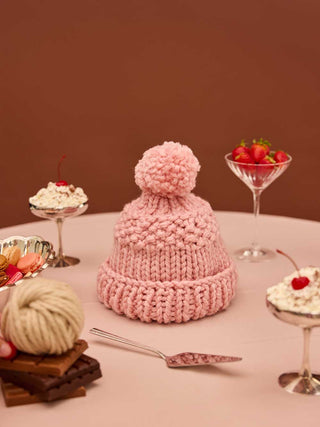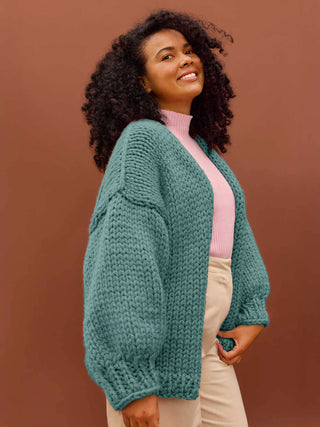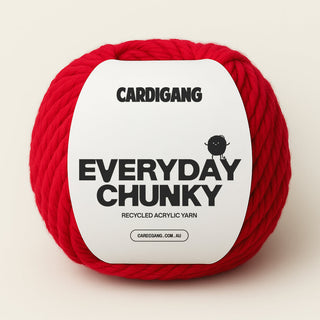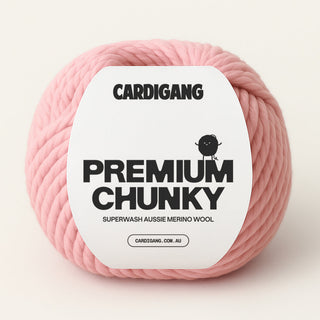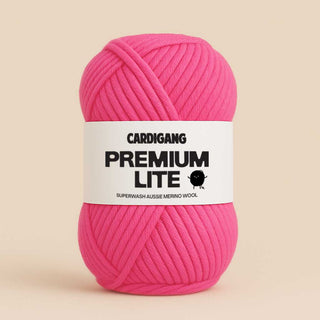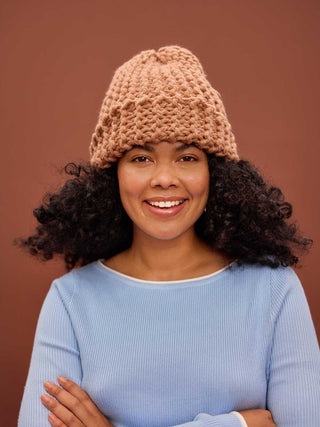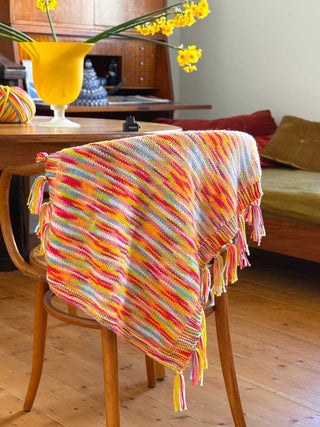Get the Knitty-Gritty on Gauge: Why It’s a Big Deal in Your Knitting Projects and how to test it like a pro 🧶✨
Ever found yourself scratching your head over the term "gauge" in your knitting patterns? Don’t worry, you’re not alone! Today, we’re diving into the world of gauge – what it is, why it matters, and how it can make or break your knitting (or crochet) project. Let’s unravel this mystery together, shall we? 😉
WHAT IS GAUGE?
Gauge is basically the magic number that tells you how many stitches and rows you’ll get per centimeter (or inch) with your yarn and needles. Think of it as the blueprint for your project. Just like a recipe needs exact measurements to bake the perfect cake, your knitting pattern needs the right gauge to turn out just right. It’s all about achieving the perfect fit and finish – and avoiding any "Oh stitch!" moments along the way.
Cardigang patterns are designed with the unique properties of each fiber in mind, including gauge. This means we've taken as much of the guess work out as possible. Helpful, right?! 🫶
WHY SHOULD WE CARE?
Great question! Here’s why getting your gauge right is super important:
Size Matters : 📏 Imagine spending hours crafting a cozy cardi, only to find out it’s either way too big or too snug. Total buzzkill, right? Gauge ensures your project ends up the size you intended. It’s the difference between a perfect fit and a woolly catastrophe.
Meterage Calculation : 🧵 The number of balls or meters your pattern recommendations are based on the specified gauge. If your gauge is off, you might run out of yarn before finishing – or have way too much left over. No one wants to play yarn chicken (the stressful game of hoping your yarn lasts till the end of the project).
Pattern Perfection : 📐 Patterns are designed with a specific gauge to achieve their unique look and feel. Whether it’s the cozy squishiness of a chunky scarf or the delicate drape of a lightweight shawl, matching the gauge helps you replicate the designer’s vision.
Drape and Texture : 🧣 The gauge affects the drape and texture of your finished piece. A tighter gauge will give you a firmer, more structured fabric, while a looser gauge creates a softer, more fluid drape. It’s like choosing between a firm mattress and a fluffy pillow – both are great, but it depends on what you’re going for!
HOW TO CHECK YOUR GAUGE
Alright, Craft Queen, here’s the nitty-gritty on checking your gauge:
Knit a Swatch : 📏 Grab the yarn and needles that came in your kit and knit a small sample a little larger than 10x10 cm. This is your gauge swatch – a little preview of what your fabric will look like.
Measure It : 🧶 Lay your swatch flat and measure to count how many stitches and rows fit into a 10x10cm square. Do this in the middle of your swatch to avoid edge wonkiness.
Compare and Adjust : 🔄 Compare your swatch measurements to the gauge specified in your pattern. If you have more stitches per cm than required, your knitting is too tight – try loosening and relaxing a little as you knit. Fewer stitches? Your knitting is too loose – try to hold your yarn a little tighter as you make your stitches. Tweak until you match the pattern gauge.
Here's how to count your stitches within your knitted swatch.


Need more tips or have gauge-related questions?
Email us at stitchup@cardigang.com.au and we'll be able to help! Whether you're just starting out, or you've got a specific question or problem (dropped a stitch, no stress!), we're here to get you out of a bind.



